Titanopsis primosii are endemic plants to Southern Namibia and to South africa.
The name titanos and opsis means small calcareous rocks and they have inherited this name as they tend to take a look of the calcareous rocks.
Titanopsis primosii form rosettes as they grow. In fact, this is a morphological form of the variable Titanopsis schwantesii.
They form in a rosette type and usually have a beautiful gray to blue green foliage color. Titanopsis primosii have conserved water in their leaves and animals try to reach them due to that feature.
However, since it is a mimicry plant it stops the animals reaching them. These are quite handy picks for container gardening as well as for temperate rock gardens.
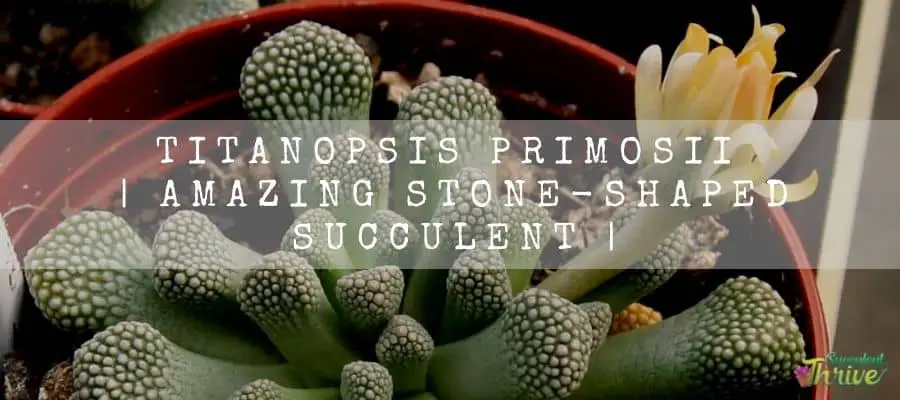
How do I identify Titanopsis primosii?
Their leaves form in rosette type and Their leaves edges would be flattened and would further consist of white, light gray wart-like protuberances.
The width of the rosettes would be 5-7 cm. Further the leaves would form in an opposite manner in the rosette.
Once they mature, they grow in clusters. They have a very short stem, and it could hardly be spotted.
Titanopsis primosii leaves upper surface comprise of chunky white-, gray- or flesh-colored regular warts. The leaves would be short and fleshy to the touch.
Besides the aforesaid factors, Titanopsis primosii produce some attractive flowers and you can identify them from that feature as well.
In fact, they produce yellow daisy-like blooms, and you could expect them to flower in the beginning of spring.
Moreover, they consist of flesh-colored tips as well. Chances are that you can spot them producing flowers in orange or in pink. The diameter of the flowers would be 0.8 inches ( 2cm).
Size of the plant
The rosettes would be 5-7 cm in diameter. Leaves would be 3 cm in length and 0.8 cm in width.
Growth rate
Titanopsis primosii are a slow growing set of plants.
One look care guide care
| Botanical Name | Titanopsis primosii |
| Common Name | living stones |
| Plant Type | Cactus |
| Mature Size | Rosettes 5-7 cm in diameter. |
| Sun Exposure | Full sunlight to filtered sunlight |
| Soil Type | Well draining |
| Soil pH | pH 5.0 – 7.0 Acid – Neutra |
| Bloom Time | Early spring |
| Flower Color | Yellow, orange or pink |
| Hardiness Zones | 9b-11b 25 degrees Fahrenheit ( -3.9 degrees Celsius ) 50 degrees Fahrenheit ( 10 degrees Celsius) |
| Native Area | Namibia and South Africa |
| Toxicity | Non toxic |
| Average price | 8 USD |
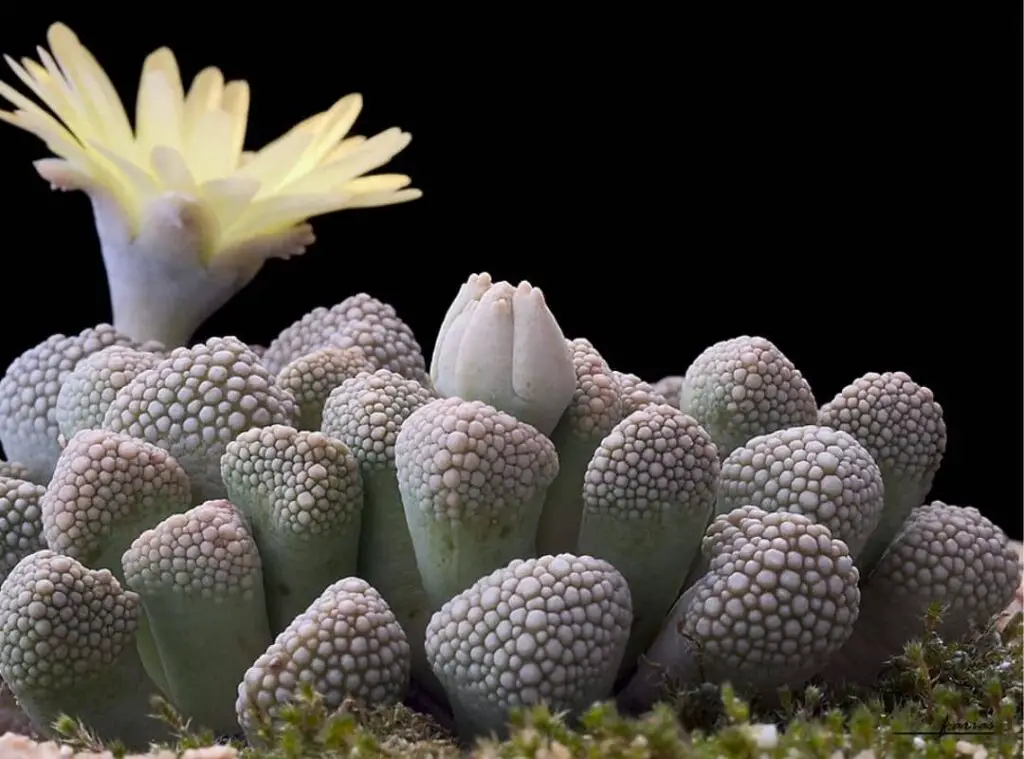
How do you take care of Titanopsis primosii?
Light Requirement
You should ensure that Titanopsis primosii get bright sunlight levels as only then can they produce offsets.
Additionally, it will enhance the flower blossoming as well. They would do well if you expose them for full sunlight and for partial shade.
So, a windowsill will suit these plants the best if you grow them as indoor plants.
Temperature and humidity
They can tolerate a minimum temperature of 8-10 degrees Celsius ( 46- 50 degrees Fahrenheit).
Having said that, the optimal temperature for the Titanopsis primosii plants would be 26-28 degrees Celsius ( 78-82 degrees Fahrenheit).
Is it cold hardy?
USDA hardiness Zone
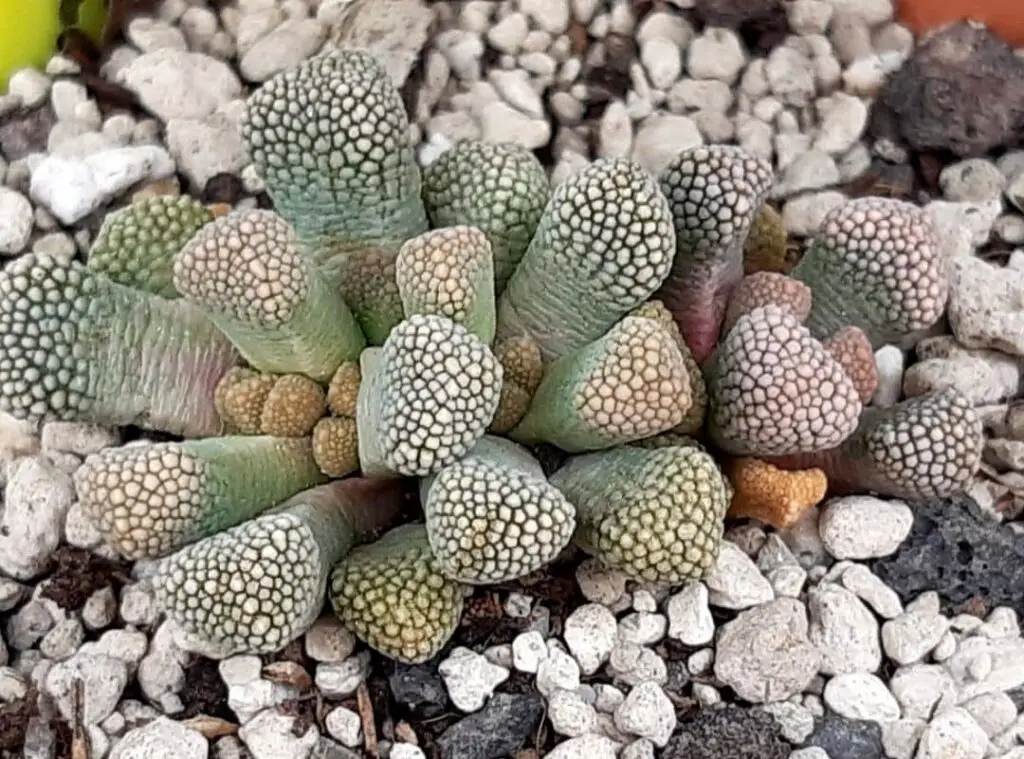
Watering Requirement
You need to water them well during spring and ensure that their soil wither between two watering sessions.
You need to water them infrequently when you water them in summer. However, ensure that you do not let them become shriveled though.
During the rest of the seasons, you can water them thoroughly but not as infrequently as in summer.
If you end up providing water for them in abundance it will make the older leaves perish and it would ultimately result in rot.
Soil Requirement Type / pH
A porous soil mix would go well with the Titanopsis primosii plants. The purpose of using a porous soil mix is that they can have a good aeration around the plants.
Ideally a coarse well-draining soil mix would be optimal for the Titanopsis primosii plants growth.
Pot size Potting and Repotting
Ensure that you are using a pot which has at least one or two draining holes to grow the Titanopsis primosii plants.
Additionally, you need to use a porous material pot as well. When it comes to repotting, you can do it only if it is essential as they are slow growers.
Where to Plant
When you grow them as houseplants, you should plant them in a porous soil mix which has excellent drainage.
Additionally , ensure that you are growing them in a place where they can gain sufficient sunlight as well.
Flowers
Titanopsis primosii produce solitary flowers. They are yellow daisy like flowers. Their flowering season would be the beginning of spring.
Those flowers have colored tips too. In addition to yellow they will produce flowers in orange or in pink colors as well.
The flowers would be 0.8 inches wide. Titanopsis primosii flowers have about 5-6 stigmas as well. Furthermore, those flowers would form into fruits as they mature.
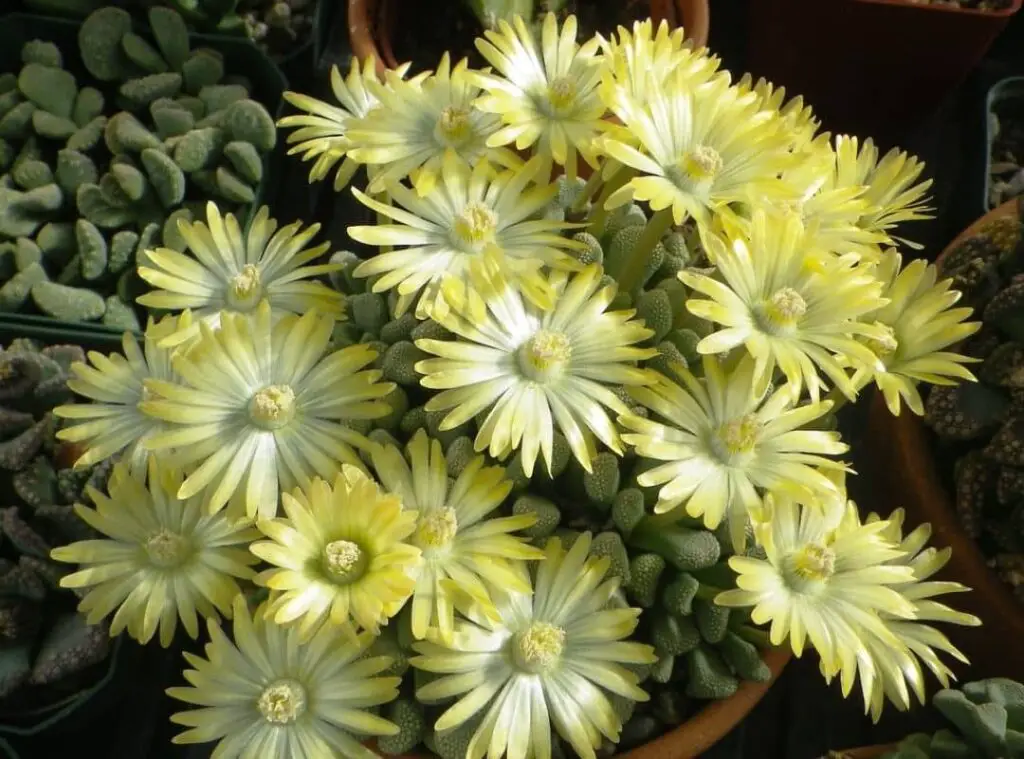
Fertilizer and time of year
You can consider feeding the Titanopsis primosii with cactus fertilizer. When feeding you need to adhere to the labeled instructions.
Dormancy
Toxicity
These are not known to be toxic.
Common bugs and illnesses
You need to protect the Titanopsis primosii plants from root rot. Further they are prone for regular pests attacks from bugs such as aphids, mealy bugs etc.
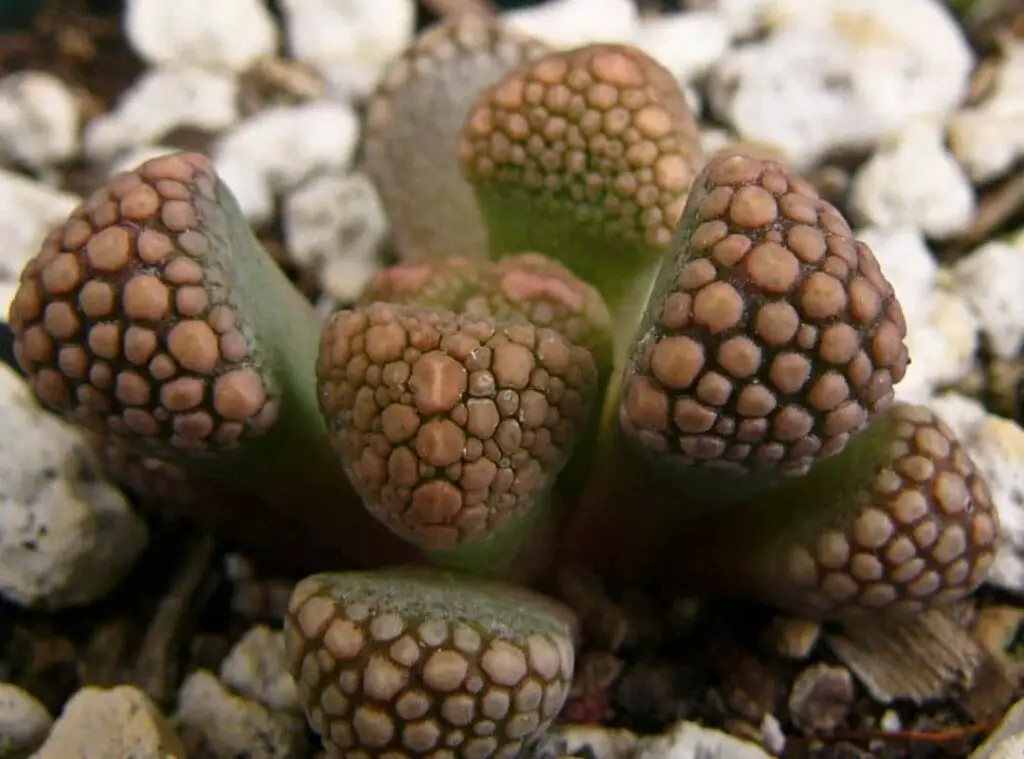
Titanopsis primosii benefits
Titanopsis primosii would be great picks for container gardening as well as for indoor gardening.
How to propagate Titanopsis primosii.
You can propagate the Titanopsis primosii from seeds and by division.
Finally
To conclude, if you ensure that you look after these plants well, they will flourish and reward you with such glamorous plants in return.
Read Next : Titanopsis Calcarea | Weird Concrete leaf Succulent Care | Graptoveria Titubans | Amazing Porcelain Plant Care | Hildewintera Aureispina | Majestic And Beautiful Cactus |


